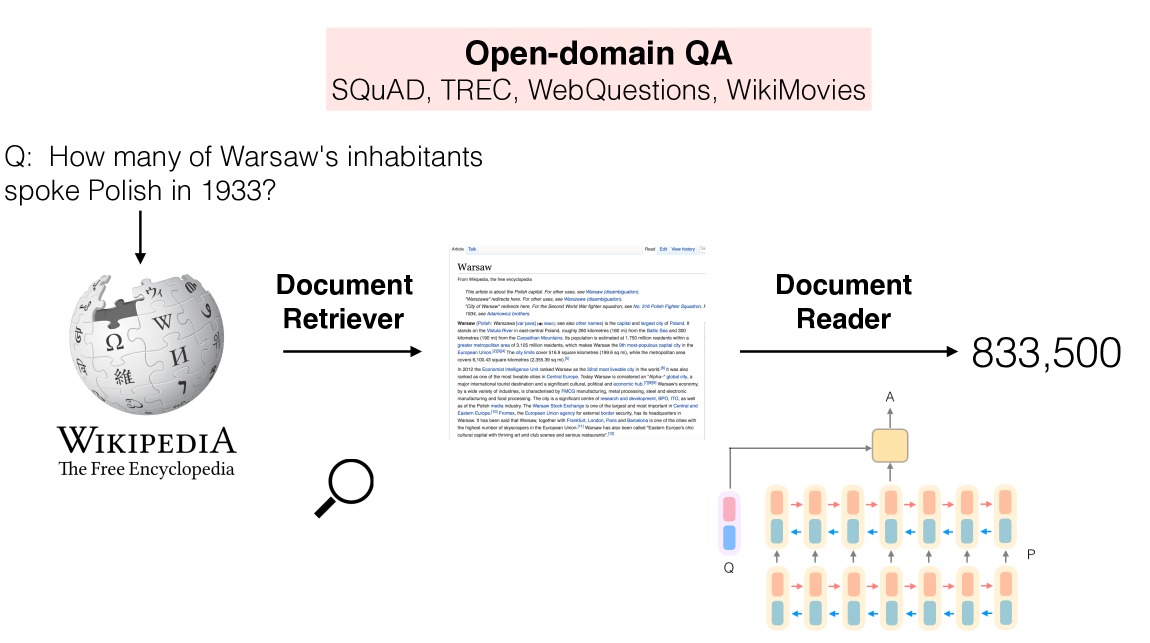A Question Answering system expects a question asked in a natural language and returns an answer. In open-domain open-book extractive QA 📖, the relevant information is retrieved from a knowledge repository and processed to extract an answer.
How can we implement such a system?
In 2017, Danqi Chen et al. published the seminal paper "Reading Wikipedia to Answer Open-Domain Questions", introducing the idea of Machine Reading at scale.
 (Image from the original paper)
(Image from the original paper)
-
the only source of knowledge is made up of unstructured text articles taken from Wikipedia.
-
first, they use a Document Retriever 🔎 module for finding the 5 most relevant articles for the user question. This search component is a non-machine learning sparse retriever, based on bigram hashing and TF-IDF matching.
-
the information collected by the retriever is processed by the Document Reader, a machine comprehension model that extracts answers from the documents. The Document Reader is a multi-layer recurrent neural network model, trained on the SQuAD dataset and other Question Answering datasets.
-
Results: Both modules taken in isolation are highly competitive against their existing counterparts. The system as a whole is effective for the challenging task of Open-Domain Question Answering!
The idea of Machine Reading at scale is still valid, effective, and widely adopted. However, nowadays the original components are usually replaced with better performing nodes.
- the retriever can be still based on the classic sparse approaches (BM25), but can also consist of a modern Dense retriever, using e.g. SentenceTransformers embeddings.
- usually, the reader is a Transformer model, fine-tuned on question answering datasets.
The reader performs a deep and complex analysis of textual passages, to extract the answers. So it can be slow and you can't run it on the whole document collection. The retriever acts as a filter, and provides the reader with only the most relevant documents, making the entire system usable and performing.
The deepset Haystack framework shows a great example of a Retriever + Reader pipeline. You can run it in just a few lines of code!
- Reading Wikipedia to Answer Open-Domain Questions: Original paper
- Haystack Tutorial 1: Build Your First Question Answering System: simple tutorial on creating a Retriever + Reader pipeline in Haystack
- How to Build an Open-Domain Question Answering System?: very deep and accurate blogpost by Lilian Weng